hexamethylcyclotrisiloxane

hexamethylcyclotrisiloxane structure
|
Common Name | hexamethylcyclotrisiloxane | ||
|---|---|---|---|---|
| CAS Number | 541-05-9 | Molecular Weight | 222.462 | |
| Density | 0.9±0.1 g/cm3 | Boiling Point | 131.0±8.0 °C at 760 mmHg | |
| Molecular Formula | C6H18O3Si3 | Melting Point | 50-64 °C(lit.) | |
| MSDS | Chinese USA | Flash Point | 26.4±18.8 °C | |
| Symbol |

GHS02 |
Signal Word | Danger | |
| Name | Hexamethylcyclotrisiloxane |
|---|---|
| Synonym | More Synonyms |
| Density | 0.9±0.1 g/cm3 |
|---|---|
| Boiling Point | 131.0±8.0 °C at 760 mmHg |
| Melting Point | 50-64 °C(lit.) |
| Molecular Formula | C6H18O3Si3 |
| Molecular Weight | 222.462 |
| Flash Point | 26.4±18.8 °C |
| Exact Mass | 222.056366 |
| PSA | 27.69000 |
| LogP | 2.15520 |
| Vapour density | 1 (vs air) |
| Vapour Pressure | 11.6±0.2 mmHg at 25°C |
| Index of Refraction | 1.418 |
| InChIKey | HTDJPCNNEPUOOQ-UHFFFAOYSA-N |
| SMILES | C[Si]1(C)O[Si](C)(C)O[Si](C)(C)O1 |
| Storage condition | Flammables area |
| Stability | Stable, but moisture sensitive. Incompatible with strong oxidizing agents. Highly flammable. |
| Water Solubility | may decompose |
| Symbol |

GHS02 |
|---|---|
| Signal Word | Danger |
| Hazard Statements | H228 |
| Precautionary Statements | P210 |
| Hazard Codes | F:Flammable |
| Risk Phrases | R11;R36/37/38 |
| Safety Phrases | S26 |
| RIDADR | UN 1325 4.1/PG 2 |
| WGK Germany | 3 |
| Packaging Group | II |
| Hazard Class | 4.1 |
| HS Code | 2931900001 |
| Precursor 9 | |
|---|---|
| DownStream 10 | |
| HS Code | 2931900001 |
|---|---|
| Summary | 2931900001 2,2,4,4,6,6,8,8,10,10-decamethyl-1,3,5,7,9,2,4,6,8,10-pentaoxapentasilecane。Supervision conditions:None。VAT:17.0%。Tax rebate rate:9.0%。Lowest tariff:6.5%。General tariff:30.0% |
|
Environmental contaminants activate human and polar bear (Ursus maritimus) pregnane X receptors (PXR, NR1I2) differently.
Toxicol. Appl. Pharmacol. 284(1) , 54-64, (2015) Many persistent organic pollutants (POPs) accumulate readily in polar bears because of their position as apex predators in Arctic food webs. The pregnane X receptor (PXR, formally NR1I2, here proposed... |
|
|
Effect of silicone on the collagen fibrillogenesis and stability.
J. Pharm. Sci. 104(4) , 1275-81, (2015) Collagen, the most abundant protein in mammals, is able to form fibrils, which have central role in tissue repair, fibrosis, and tumor invasion. As a component of skin, tendons, and cartilages, this p... |
| hexamethylcyclortrisiloxane |
| HEXAMETHYLCYCLOHEXASILOXANE |
| EINECS 208-765-4 |
| SDK 10 |
| 2,2,4,4,6,6-Hexamethyl-1,3,5,2,4,6-trioxatrisilinane |
| hexamethylcyclotrisiloxane |
| LS 8120 |
| cyclohexamethyltrisiloxane |
| Cyclotrisiloxane, 2,2,4,4,6,6-hexamethyl- |
| hexamethyl-cyclotrisiloxane |
| hexamethyl-cyclotrisiloxan |
| MFCD00005943 |
| 1,1,3,3,5,5-hexamethylcyclotrisiloxane |
| CYCLOTRISILOXANE |
| hexamethyltrisiloxane |
| Hexamethylcyclotrisi |
| cyclotrisiloxane,hexamethyl |
| CH7260 |
 CAS#:7732-18-5
CAS#:7732-18-5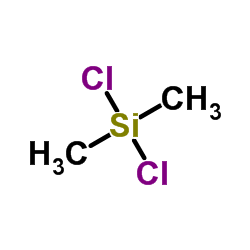 CAS#:75-78-5
CAS#:75-78-5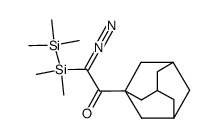 CAS#:87594-05-6
CAS#:87594-05-6 CAS#:1066-42-8
CAS#:1066-42-8![3,3-dimethyl-2-oxa-3-sila-bicyclo[2.2.2]oct-7-ene-5exo,6exo-dicarboxylic acid anhydride Structure](https://image.chemsrc.com/caspic/411/84521-19-7.png) CAS#:84521-19-7
CAS#:84521-19-7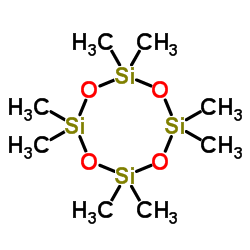 CAS#:556-67-2
CAS#:556-67-2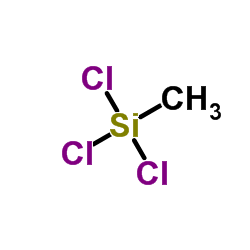 CAS#:75-79-6
CAS#:75-79-6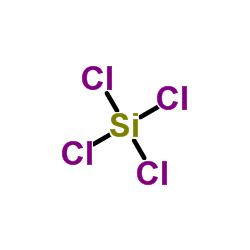 CAS#:10026-04-7
CAS#:10026-04-7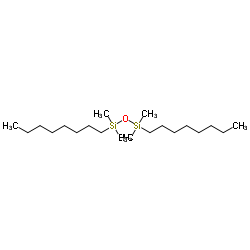 CAS#:18642-94-9
CAS#:18642-94-9 CAS#:107-50-6
CAS#:107-50-6 CAS#:541-02-6
CAS#:541-02-6 CAS#:540-97-6
CAS#:540-97-6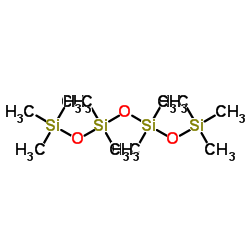 CAS#:141-62-8
CAS#:141-62-8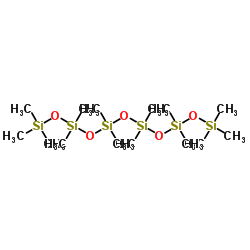 CAS#:107-52-8
CAS#:107-52-8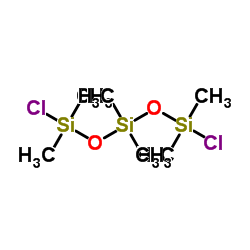 CAS#:3582-71-6
CAS#:3582-71-6 CAS#:995-83-5
CAS#:995-83-5 CAS#:5895-30-7
CAS#:5895-30-7 CAS#:5827-42-9
CAS#:5827-42-9
